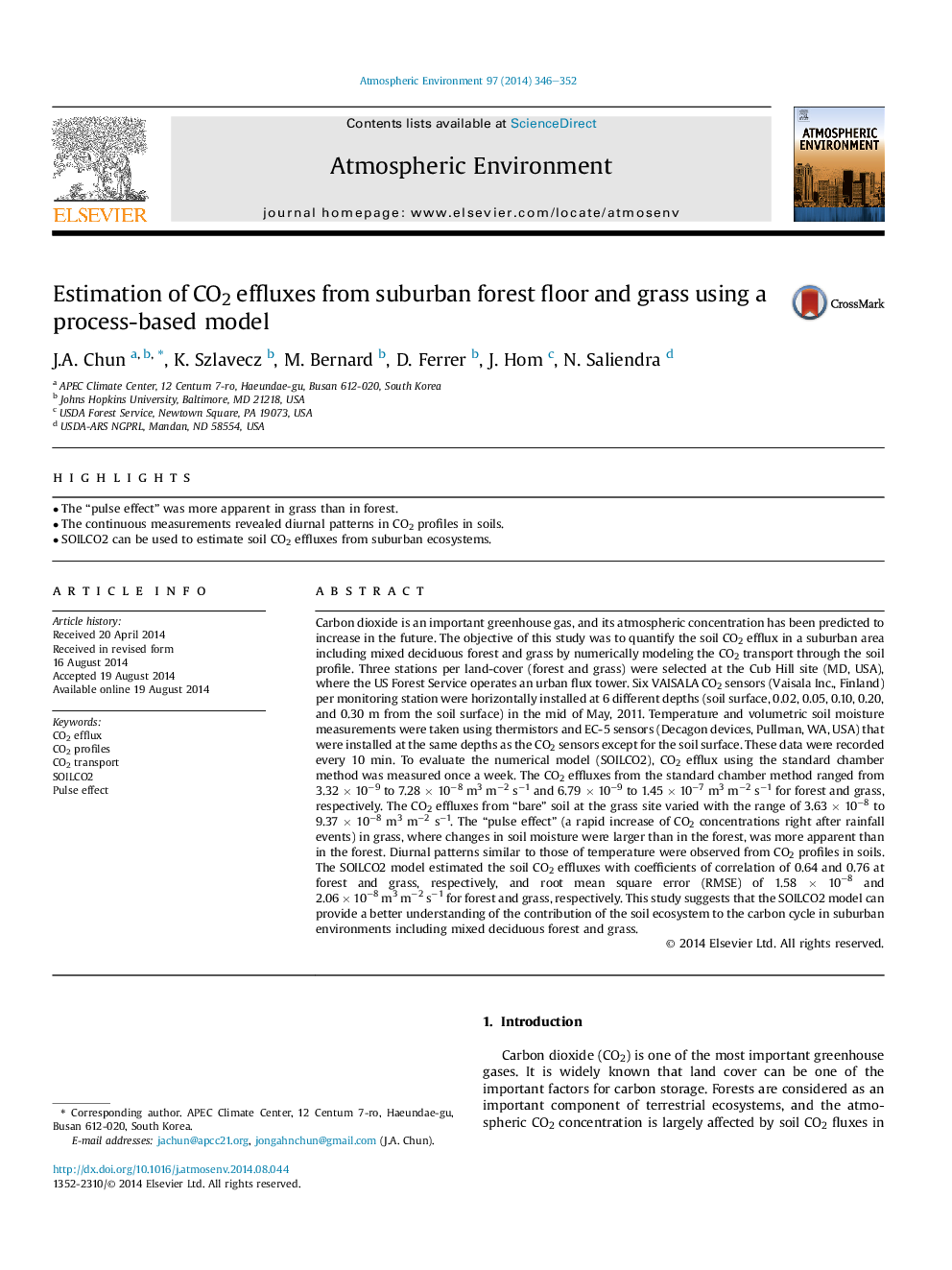| Article ID | Journal | Published Year | Pages | File Type |
|---|---|---|---|---|
| 6339809 | Atmospheric Environment | 2014 | 7 Pages |
Abstract
Carbon dioxide is an important greenhouse gas, and its atmospheric concentration has been predicted to increase in the future. The objective of this study was to quantify the soil CO2 efflux in a suburban area including mixed deciduous forest and grass by numerically modeling the CO2 transport through the soil profile. Three stations per land-cover (forest and grass) were selected at the Cub Hill site (MD, USA), where the US Forest Service operates an urban flux tower. Six VAISALA CO2 sensors (Vaisala Inc., Finland) per monitoring station were horizontally installed at 6 different depths (soil surface, 0.02, 0.05, 0.10, 0.20, and 0.30Â m from the soil surface) in the mid of May, 2011. Temperature and volumetric soil moisture measurements were taken using thermistors and EC-5 sensors (Decagon devices, Pullman, WA, USA) that were installed at the same depths as the CO2 sensors except for the soil surface. These data were recorded every 10Â min. To evaluate the numerical model (SOILCO2), CO2 efflux using the standard chamber method was measured once a week. The CO2 effluxes from the standard chamber method ranged from 3.32Â ÃÂ 10â9 to 7.28Â ÃÂ 10â8Â m3Â mâ2Â sâ1 and 6.79Â ÃÂ 10â9 to 1.45Â ÃÂ 10â7Â m3Â mâ2Â sâ1 for forest and grass, respectively. The CO2 effluxes from “bare” soil at the grass site varied with the range of 3.63Â ÃÂ 10â8 to 9.37Â ÃÂ 10â8Â m3Â mâ2Â sâ1. The “pulse effect” (a rapid increase of CO2 concentrations right after rainfall events) in grass, where changes in soil moisture were larger than in the forest, was more apparent than in the forest. Diurnal patterns similar to those of temperature were observed from CO2 profiles in soils. The SOILCO2 model estimated the soil CO2 effluxes with coefficients of correlation of 0.64 and 0.76 at forest and grass, respectively, and root mean square error (RMSE) of 1.58Â ÃÂ 10â8 and 2.06Â ÃÂ 10â8Â m3Â mâ2Â sâ1 for forest and grass, respectively. This study suggests that the SOILCO2 model can provide a better understanding of the contribution of the soil ecosystem to the carbon cycle in suburban environments including mixed deciduous forest and grass.
Keywords
Related Topics
Physical Sciences and Engineering
Earth and Planetary Sciences
Atmospheric Science
Authors
J.A. Chun, K. Szlavecz, M. Bernard, D. Ferrer, J. Hom, N. Saliendra,
